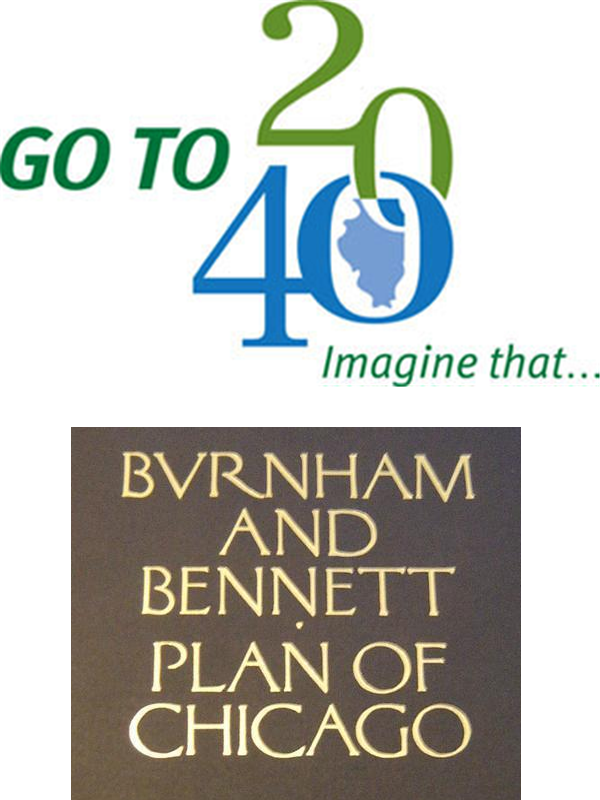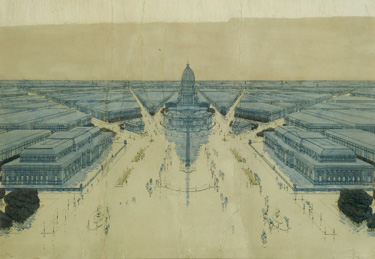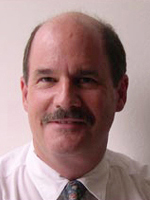“A city is competitive if people think of it as a nice place to live.”
Chicago Sun-Times business reporter David Roeder isn’t as grandiloquent as Daniel Burnham was a century ago. But he articulates an idea that was at the heart of Burnham’s Plan of Chicago.
“The people of Chicago have ceased to be impressed by rapid growth or the great size of the city,” Burnham wrote. “What they insist asking now is, How are we living?...If the city does not become better as it becomes bigger, shall not the defect be remedied?”
 Roeder (left) is appearing on a panel of land and planning experts at a recent national meeting of Lambda Alpha International, an honorary society for the advancement of land economics. For two hours, he and the rest of the panel discuss the importance of the planning blueprint that Burnham and his colleagues drew up in 1909 --- and its implications for the future.
Roeder (left) is appearing on a panel of land and planning experts at a recent national meeting of Lambda Alpha International, an honorary society for the advancement of land economics. For two hours, he and the rest of the panel discuss the importance of the planning blueprint that Burnham and his colleagues drew up in 1909 --- and its implications for the future.
For instance, the panel is asked if the GO TO 2040 comprehensive regional plan, now being prepared by the Chicago Metropolitan Agency for Planning (CMAP), will be as successful at shaping the region as Burnham’s plan was.
 In other words, a century from now, will there be a panel like this one discussing it?
In other words, a century from now, will there be a panel like this one discussing it?
“I hope so,” says Robert D. Yaro, the president of the Regional Plan Association which promotes better planning throughout the New York metropolitan region. The question, he says, is simple: “Is it able to capture the vision for this city?”
To be sure, CMAP’s problem --- and the problem of anyone promoting regional planning today --- is that the world is much different today than it was in Burnham’s time when a single group of business leaders could deal with a single set of political leaders to implement proposals that, for the most part, were focused on a single city.
“We’re diverse in the best way as a society, but also splintered,” Wellington “Duke” Reiter, the president of the School of the Art Institute of Chicago, tells the crowd in the Walton Room of the Drake Hotel. “It’s hard to find consensus.”
Another problem that the panel members hint at is the thought that a plan must be perfect.
Burnham’s fault
Part of this is Burnham’s fault. He and his co-author Edward Bennett put together a document that was a work of art. The language was poetic, and the images, many of them watercolors by Jules Guerin, were spectacular.
 Yet, the fact is that little of the Plan of Chicago became reality in exactly the way Burnham, Bennett, Guerin and their colleagues envisioned it.
Yet, the fact is that little of the Plan of Chicago became reality in exactly the way Burnham, Bennett, Guerin and their colleagues envisioned it.
There was a willingness on the part of the document’s supporters to accept compromises and revisions and adaptations of the Plan over the decades --- indeed, over the century --- during which it has been a guiding spirit to the development of Chicago and the region.
“You have to have that messiness to get anything done,” says Roeder.
And he’s certainly right.
Creating a plan involves an immense amount of detail work. The i’s have to be dotted, and the t’s have to be crossed. Each fact has to be double-checked. Each proposal needs to be crafted so that it’s as clear and persuasive as possible.
But, then, once the document is made public, that pristine-ness has to go by the board.
A good plan, however well-envisioned, however well-documented, is made to be written on. It is made for people to edit, to cross out paragraphs, to scribble in notations. A good plan is the starting place for negotiations, an arena in which debates can take place. The site where new dreams can take off.
“Quality of life”
Planning is messy. No way around it.
But however many of its details may be changed or tinkered with, a good plan has one thing that remains --- its spirit of thinking of the future and working to shape that future.
Will the CMAP plan be seen as important 100 years from now?
 “Quality of life is the key,” says Yaro (left).
“Quality of life is the key,” says Yaro (left).
“Sounds like Burnham? It sure does.”
For a print-friendly version of this post, go here.
Blog Categories
- art (14)
- civic engagement (17)
- culture (16)
- future (26)
- green legacy (15)
- history (26)
- pavilions (4)
- schools (8)
- transportation (7)
